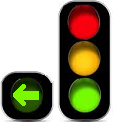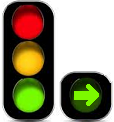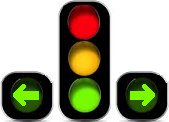control software
Part II
After finishing the initial domain analysis, we can move to
considering how do these variations impact the control software of a
traffic light. Let’s first extract the features relevant to the control
software from the last version
of our domain model. We can remove the jurisdictions, constraints,
and physical properties mountLocation and
orientation, since they do not impact the control software
in any way. We also remove red, yellow, and
green because they are mandatory and
countdownTimer as it won’t be considered in this part.
TrafficLightSystem
Lamps
LeftGreenArrow ?
RightGreenArrow ?
redAndYellowToGreen ?
allWayFlashingRedAsStop ?
allWayYellow ?
or advancedOrExtendedLeft ?
greenFlashing
leftArrowConsider the above simplified model as the
interface between the domain model and the
control software. The presence or absence of these features will be
decided at the domain level but our control software must handle all
possible decisions. This interface model describes all variability from
the control software point of view.
From our domain analysis, we learned that all kinds of lamps,
including the arrow lamps, can be in three states: on,
off, and flashing. Let’s focus first on a
single traffic light. The images below show different traffic light
configurations with all lamps turned on

|

|

|

|
We can model the states of such a traffic light as follows:
We can see all possible combinations of states in the configurator.
Given so much repetition in the model, it would be nice to introduce
an abstraction of a lamp. In Clafer, we can use inheritance for that
purpose. Let’s pull up the  lamp
abstraction.
lamp
abstraction.
